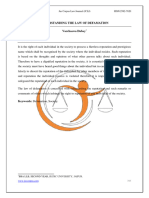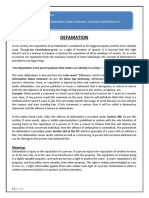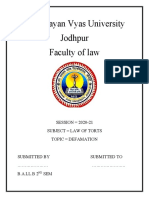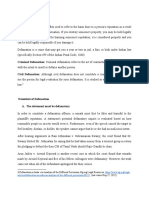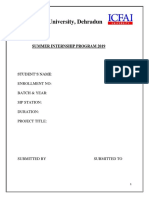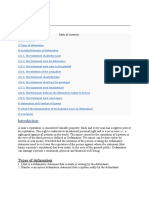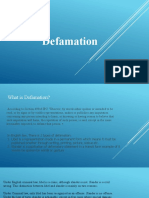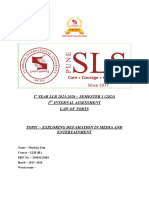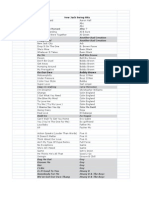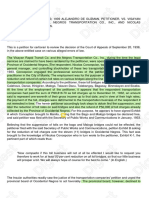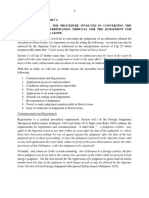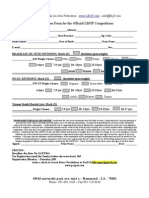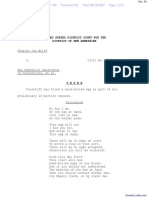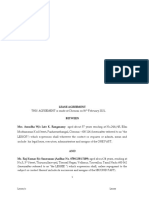0% found this document useful (0 votes)
40 views15 pagesTort Research Paper
The document is a research project on defamation submitted by Suyash Raj Singh at the Indore Institute of Law, outlining the legal definitions, implications, and historical context of defamation laws. It discusses the differences between libel and slander, the requirements for proving defamation, and the defenses available against defamation claims. The project also analyzes relevant sections of the Indian Penal Code regarding defamation and highlights the importance of protecting one's reputation in contemporary society.
Uploaded by
krishguptag760Copyright
© © All Rights Reserved
We take content rights seriously. If you suspect this is your content, claim it here.
Available Formats
Download as PDF, TXT or read online on Scribd
0% found this document useful (0 votes)
40 views15 pagesTort Research Paper
The document is a research project on defamation submitted by Suyash Raj Singh at the Indore Institute of Law, outlining the legal definitions, implications, and historical context of defamation laws. It discusses the differences between libel and slander, the requirements for proving defamation, and the defenses available against defamation claims. The project also analyzes relevant sections of the Indian Penal Code regarding defamation and highlights the importance of protecting one's reputation in contemporary society.
Uploaded by
krishguptag760Copyright
© © All Rights Reserved
We take content rights seriously. If you suspect this is your content, claim it here.
Available Formats
Download as PDF, TXT or read online on Scribd
/ 15




















